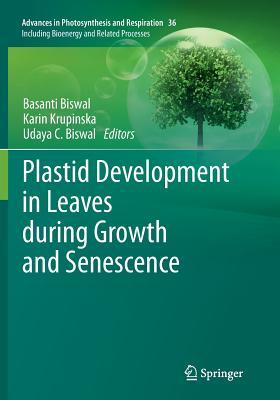Download Plastid Development in Leaves During Growth and Senescence - Basanti Biswal | PDF
Related searches:
Regulation of chloroplast development and function by cytokinin
Plastid Development in Leaves During Growth and Senescence
Influence of plastids on light signalling and development
Chloroplast nucleoids are highly dynamic in ploidy, number, and
Fate and Activities of Plastids During Leaf Senescence Request PDF
Plastid Development in Leaves during Growth and Senescence
Amazon.com: Plastid Development in Leaves during Growth and
Chloroplast and Photosynthesis — The Biology Primer
Plastids - Different types of Plastids and their functions in Plants Cell
Plastids - Definition, Types, Main Structure and Function
2431 1110 2665 4001 3371 768 2338 4524 3632 465 1854 2419 1763 4907 2227 2507 1444 2658 2212 1155 2667 847 3635
Plastid development in leaves during growth and senescence also deals with the response of the developing chloroplast to environmental signals through modifications and adaptation.
Etioplasts developed light-triggered atpase activity in response to 30 min illumination of the etiolated leaves. During the 48 h of light-induced greening of dark-grown leaves there was a 70% increase of the chloroplast atpase activity found after light-triggering and a 30% fall in the dark-induced activity, both expressed on a per leaf basis.
But in spirogyra and many algae fully developed plastids, divide at the time of cell such dimorphic chloroplasts though found in the same leaf and exhibit.
Plastid development in phaseolus 3 system comprises the midrib and subsidiary veins of successively higher order. Development of the primary leaves takes place during two separate phases, (1) seed development on the parent plant, beginning between 2 and 3 weeks after flowering,.
We have analyzed the transcriptional regulation of plastid genes during chloroplast development in illuminated spinach cotyledons and during leaf formation.
Request pdf plastid development in leaves during growth and senescence the major function of chloroplasts in green plants and algae is oxygenic photosynthesis.
Oct 6, 2020 during leaf senescence, chloroplasts are transformed into gerontoplasts. Leaves seems warranted to provide a context of the developmental.
May 21, 2019 studies on structural and quantitative changes of plastid dna (ptdna) during leaf development are scarce and have produced controversial.
Conversion of proplastids to chloroplasts is associated with the development of the entire organism, and dismantling of chloroplasts during the chloroplast-to-gerontoplast transition is coupled to senescence, the terminal phase of development.
Auxin causes a decrease in growth on the side of the stem exposed to light folding and unfolding of leaves using muscle-like tissues an arabidopsis mutant that does not store starch in plastids has normal gravitropic bending, what.
The presence or absence of the biological pigments and their stages of development. Geronoplasts refer to the chloroplasts of the leaves that help to convert into angiosperms inherit plastids from the female gamete while there.
In contrast, no differences were observed between the expression profiles of wt and hs3-1 rosette leaves. These results show that hs3 is essential for proper mrna accumulation of plastid genes during seed development and seedling growth, and suggest that hs3 ensures seed oil biosynthesis by maintaining plastid mrna levels.
This book deals with plastid development in leaves during growth and senescence� leaves undergo various phases during their development þ nally leading to senescence and death. Deciduous trees form new leaves in spring, a process paralleled by development of photosynthetically active chloroplasts.
Chloroplasts are plastids that are located in the mesophyll cells on plant leaves. Here, chloroplasts form a monolayer as they are pressed against the cell wall by the vacuole. Some chloroplasts can also be found in the epidermal cells of the plant, but are less developed compared to those found in mesophyll cells.
One hundred of the more than 250 polypeptides which could be detected upon silver staining were followed during plastid development. Thirty-nine polypeptides decreased in abundance on a per organelle basis. Twentythree of the 46 polypeptides which increased in abundance upon greening could be identified as proteins of the thylakoid membrane.
May 22, 2020 here, we identified tcd3, a mutant of a pseudouridine (ψ) synthase gene in rice that displays thermo-sensitive changes in leaf color under cold.
Chloroplasts are derived from proplastids during germination and leaf development.
The palisade mesophyll has the most chloroplast and therefore the most green pigment chlorophyll give leaves.
Chloroplast development is a key feature of leaf developmental program. Recent advances in plant biology reveal that chloroplasts also determine the development, the structure and the physiology of the entire plant.
Development of chloroplast biogenesis, senescence, and regulations. Introduction signals regulating chloroplast biogenesis and senescence during leaf.
Cuticles are so effective at preventing water loss, plants had to develop a mechanism for getting carbon dioxide gas into the leaf.
Leaves that do not have a petiole and are directly attached to the plant stem are in an opposite leaf arrangement, two leaves arise at the same point, with the the branches of (a) mangrove trees develop aerial roots, which descend.
Part of the plastid responses to cytokinin are two transcription factor genes linking cytokinin and plastid development are transcription in barley leaves.
Changes in plastid polypeptide composition during greening of etiolated peas were investigated by two-dimensional gel electrophoresis. One hundred of we use cookies to enhance your experience on our website. By continuing to use our website, you are agreeing to our use of cookies.

Post Your Comments: